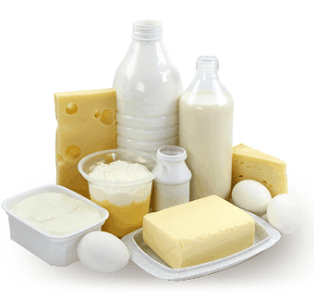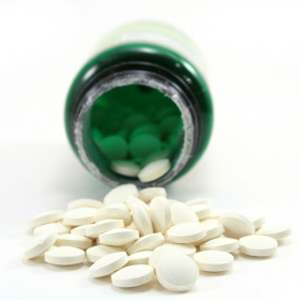Different Body Types and the Recommended Work Outs
Not every body’s created equal. Before you start your training and nutrition regimen, it’s a good idea to figure out your body type. Knowing which of the three basic body types you’re closest to will help you better tailor your diet and exercise plan and set realistic, attainable goals that pave the way to your success. There are three basic human body types: the endomorph, characterized by a preponderance of body fat; the mesomorph, marked by a well-developed musculature; and the ectomorph, distinguished by a lack of much fat or muscle tissue. It’s all about the illusion these structures create. An ectomorph will naturally look skinner than he or she is, an endomorph will look heavier even when ripped, and a mesomorph will look well proportioned even with a little added weight.
 An endomorph is an individual who has “a heavy rounded body build often with a marked tendency to become fat”. In bodybuilding lingo – an endomorph is a person whose bulking period is marked by a large amount of fat gain in addition to muscle gain, and whose cutting period is marked by a long and difficult attempt at fat loss. Four days of weight training throughout the week will ensure that the afterburn increased metabolic response from each training session will spill over into all rest days. One or two cardio days should also be included throughout the week. However, no matter if an endomorph is bulking or cutting, weight training should be the main focus. An increased amount of muscle mass will increase their base metabolic rate, thereby decreasing the chance of storing/holding onto fat cells.
An endomorph is an individual who has “a heavy rounded body build often with a marked tendency to become fat”. In bodybuilding lingo – an endomorph is a person whose bulking period is marked by a large amount of fat gain in addition to muscle gain, and whose cutting period is marked by a long and difficult attempt at fat loss. Four days of weight training throughout the week will ensure that the afterburn increased metabolic response from each training session will spill over into all rest days. One or two cardio days should also be included throughout the week. However, no matter if an endomorph is bulking or cutting, weight training should be the main focus. An increased amount of muscle mass will increase their base metabolic rate, thereby decreasing the chance of storing/holding onto fat cells.
 An ectomorph has the body type that is most often seen in the pages of fashion magazines. They are slim boned, long limbed, lithe and have very little body fat and little muscle. Ectomorphs tend to have fragile, delicately built bodies and find it difficult to gain weight or add muscle. With an ectomorph already burning calories at such a fast pace, burning even more with cardio is not an efficient way to pack on any substantial mass. The ectomorph looking to maintain cardiovascular fitness for general health and longevity should only do cardio at a moderate pace for 30 minutes three times per week. Any more than this is going to be detrimental to the goal of gaining weight.
An ectomorph has the body type that is most often seen in the pages of fashion magazines. They are slim boned, long limbed, lithe and have very little body fat and little muscle. Ectomorphs tend to have fragile, delicately built bodies and find it difficult to gain weight or add muscle. With an ectomorph already burning calories at such a fast pace, burning even more with cardio is not an efficient way to pack on any substantial mass. The ectomorph looking to maintain cardiovascular fitness for general health and longevity should only do cardio at a moderate pace for 30 minutes three times per week. Any more than this is going to be detrimental to the goal of gaining weight.
The mesomorph body type is characterized by a naturally athletic physique with well-developed muscles. If you have this body type, you likely are able to put on muscle easily when you lift weights and find it fairly easy to gain and lose body weight. However, this doesn’t mean you can eat whatever you want and lie around on the couch all day. You still need a targeted diet and fitness plan that helps you avoid fat gain and improve your overall health. It is recommended that mesomorphs lift moderate to heavy weight in order to stimulate muscle growth. Once a mesomorph has reached his ideal physique, he can train to maintain. Mesomorphs don’t need to do as much cardio as endomorphs, but they should still engage in cardio exercise such as running or cycling for 35 minutes three days a week.

 Subscribe Now
Subscribe Now


 The diet supplement conjugated linoleic acid, better known as CLA, has created some excitement in the weight-loss world for its advertised ability to help overweight people shed unwanted pounds. But new studies suggest that CLA may have some previously unknown, unsavory side effects. One needs to be careful and consult a doctor before taking such supplements.
The diet supplement conjugated linoleic acid, better known as CLA, has created some excitement in the weight-loss world for its advertised ability to help overweight people shed unwanted pounds. But new studies suggest that CLA may have some previously unknown, unsavory side effects. One needs to be careful and consult a doctor before taking such supplements.
 Naturally present in dairy and beef, CLA consists of subcomponents called isomers. Different isomers have been isolated in animal research as having various health benefits. For example, the isomer most prevalent in dairy products has potential anti-carcinogenic benefits, while the one most prevalent in pastured beef is potentially effective in the regulation of body fat. Some research suggests other CLA isomers could have other health benefits such as protecting the heart, preventing thickening of arteries, preventing cancer, particularly breast cancer, and helping to regulate the immune system. CLA is not an essential fatty acid, so technically we don’t have to have CLA in our diets in order to be healthy. However, CLA has many potential health benefits which make it a welcome addition to a diet designed to nourish and protect. CLA is unique among foods with possible anti-cancer activity because it is derived from animal products, and seems to be effective in amounts humans typically get from eating food.
Naturally present in dairy and beef, CLA consists of subcomponents called isomers. Different isomers have been isolated in animal research as having various health benefits. For example, the isomer most prevalent in dairy products has potential anti-carcinogenic benefits, while the one most prevalent in pastured beef is potentially effective in the regulation of body fat. Some research suggests other CLA isomers could have other health benefits such as protecting the heart, preventing thickening of arteries, preventing cancer, particularly breast cancer, and helping to regulate the immune system. CLA is not an essential fatty acid, so technically we don’t have to have CLA in our diets in order to be healthy. However, CLA has many potential health benefits which make it a welcome addition to a diet designed to nourish and protect. CLA is unique among foods with possible anti-cancer activity because it is derived from animal products, and seems to be effective in amounts humans typically get from eating food. Individuals get
Individuals get 
 Chromium picolinate is a chemical compound sold as a nutritional supplement to treat type 2 diabetes and promote weight loss.This bright-red coordination compound is derived from chromium (III) and picolinic acid. Small quantities of chromium are needed for glucose utilization by insulin in normal health, but deficiency is extremely rare and has only been observed in hospital patients on long-term defined diets. Chromium has been identified to regulate insulin by increasing the sensitivity of the insulin receptor.
Chromium picolinate is a chemical compound sold as a nutritional supplement to treat type 2 diabetes and promote weight loss.This bright-red coordination compound is derived from chromium (III) and picolinic acid. Small quantities of chromium are needed for glucose utilization by insulin in normal health, but deficiency is extremely rare and has only been observed in hospital patients on long-term defined diets. Chromium has been identified to regulate insulin by increasing the sensitivity of the insulin receptor. Green Tea Extract- Epigallocatechin gallate (EGCG), a compound found in green tea, was shown to increase fat oxidation by 33 percent.This result comes from one of many studies that have looked at green tea’s potential in weight loss. EGCG has been shown to be a key component in many of these studies. There are a number of ways the EGCG could help aid weight loss:
Green Tea Extract- Epigallocatechin gallate (EGCG), a compound found in green tea, was shown to increase fat oxidation by 33 percent.This result comes from one of many studies that have looked at green tea’s potential in weight loss. EGCG has been shown to be a key component in many of these studies. There are a number of ways the EGCG could help aid weight loss:

 Diabetes: There are concerns that taking conjugated linoleic acid can worsen
Diabetes: There are concerns that taking conjugated linoleic acid can worsen 




 If you’ve found that munching sugary snacks just makes you crave more sugary snacks, you’re not alone. Eating lots of simple carbohydrates — without the backup of proteins or fats — can quickly satisfy hunger and give your body a short-term energy boost, but they almost as quickly leave you famished again and craving more. The problem comes not when we indulge in a sweet treat now and then, but when we over-consume, something that’s easy to do when sugar is added to many processed foods, including breads, yogurt, juices, and sauces. Therefore one needs to consciously make an effort to keep the sugar cravings under control.
If you’ve found that munching sugary snacks just makes you crave more sugary snacks, you’re not alone. Eating lots of simple carbohydrates — without the backup of proteins or fats — can quickly satisfy hunger and give your body a short-term energy boost, but they almost as quickly leave you famished again and craving more. The problem comes not when we indulge in a sweet treat now and then, but when we over-consume, something that’s easy to do when sugar is added to many processed foods, including breads, yogurt, juices, and sauces. Therefore one needs to consciously make an effort to keep the sugar cravings under control. Several studies have shown that people who keep food journals are more likely to be successful in losing weight and keeping it off. In fact, a researcher from one recent study says that people keeping a food diary six days a week lost about twice as much weight as those who kept food records one day a week or less. For one thing, keeping a food diary instantly increases your awareness of what, how much, and why you are eating. This helps you cut down on mindless munching. Food diaries also help people identify areas where they can make changes that will help them lose weight.
Several studies have shown that people who keep food journals are more likely to be successful in losing weight and keeping it off. In fact, a researcher from one recent study says that people keeping a food diary six days a week lost about twice as much weight as those who kept food records one day a week or less. For one thing, keeping a food diary instantly increases your awareness of what, how much, and why you are eating. This helps you cut down on mindless munching. Food diaries also help people identify areas where they can make changes that will help them lose weight.